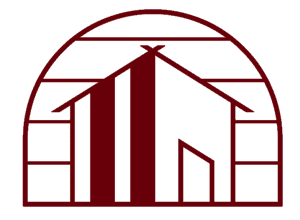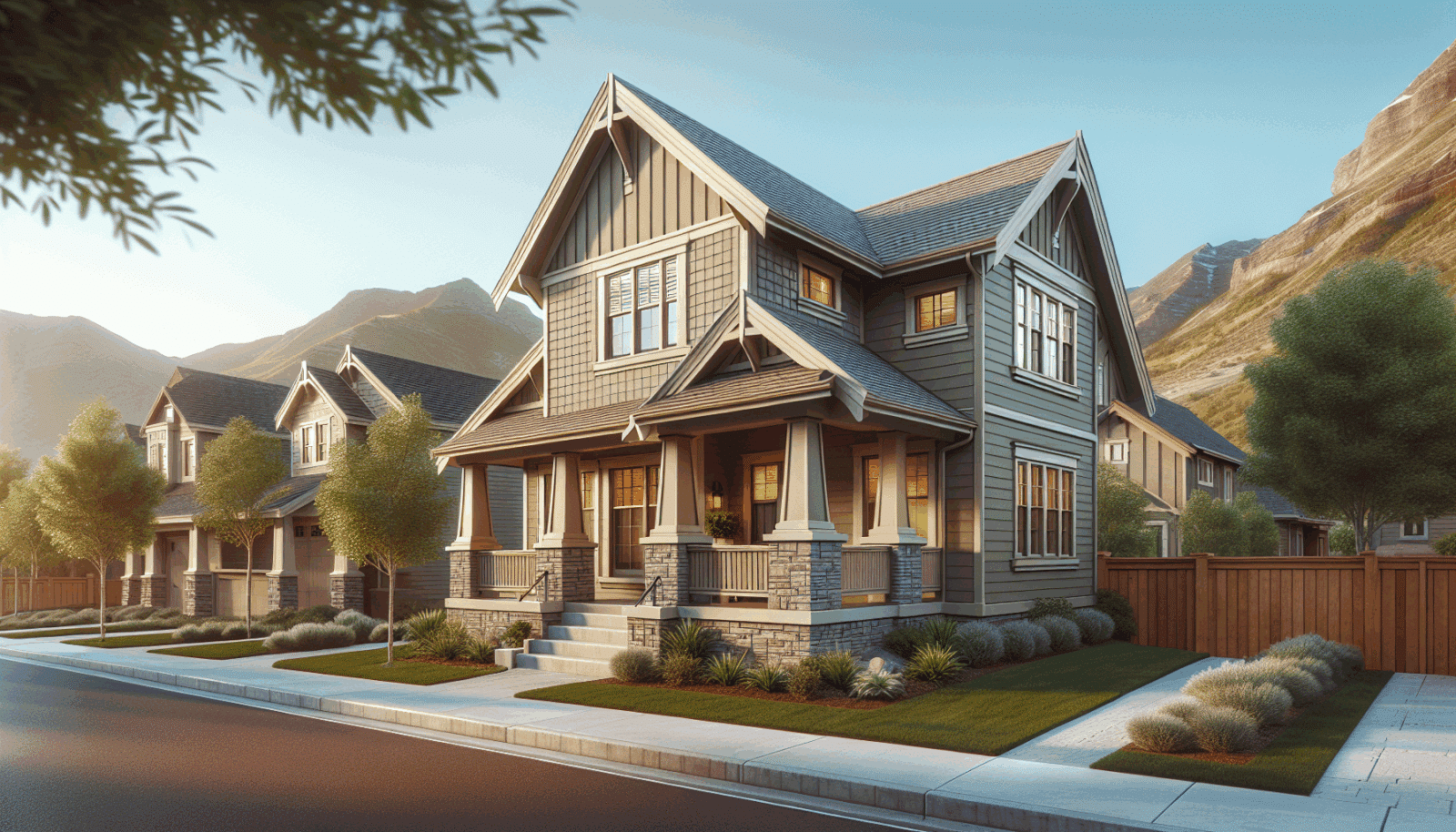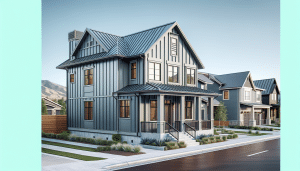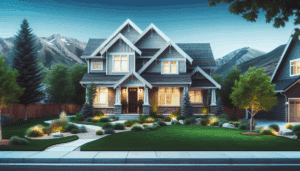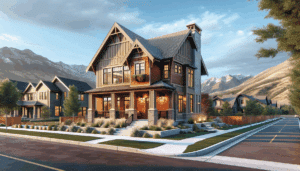Are you curious about the importance of proper Siding Installation? We’re here to clear things up. At Utah Siding & Exteriors, we know how confusing home improvement projects can be, especially when it comes to ensuring your home’s exterior is both beautiful and functional. In this article, we’ll dive into why proper siding installation matters and how you, as a homeowner, can benefit from it. Let’s make your home the best it can be.
Why Proper Siding Installation Matters
Proper siding installation is crucial for various reasons. First, it shields your home from the elements, acting as the first line of defense against wind, rain, and snow. Without it, your home is susceptible to damage, leading to costly repairs. Second, it maintains the structural integrity of your house. A poorly installed siding can lead to water infiltration, which will weaken the structure over time.
Moreover, proper siding adds to your home’s aesthetic appeal. A well-installed siding can boost your home’s curb appeal, making it more inviting. Lastly, it also contributes to energy efficiency. Quality siding acts as an extra layer of insulation, keeping your home warm in winter and cool in summer, significantly reducing energy costs.
Signs of Poor Siding Installation
Recognizing signs of poor siding installation can save you money and headaches down the road. One common sign is visible seams. If you can see lines where the panels connect, it’s likely the installation was not done correctly. Another sign is warping or buckling. Siding should lay flat and smooth against the exterior of your house.
Peeling paint and mold are also indicators of poor installation. These signs usually mean moisture is getting trapped behind the siding, creating an environment conducive to mold growth. Lastly, if you notice an increase in your energy bills, it might be due to improper siding that doesn’t insulate as it should.
Material Matters: Choosing the Right Siding
Choosing the right siding material is just as crucial as the installation process. Vinyl Siding is a popular option due to its durability and low maintenance. Additionally, it’s available in a range of colors and styles, making it versatile. Fiber Cement Siding is another great option. It mimics the look of wood but is more resistant to insects and rot.
Wood Siding offers a classic, timeless appearance, but requires more upkeep. It’s perfect for those looking to give their homes a traditional feel. Aluminum Siding is an older option, but it’s fire-resistant and can be painted easily to freshen up the look. Lastly, for a highly durable and modern aesthetic, you might consider composite siding. Each material has its pros and cons, so it’s essential to choose one that fits your specific needs and budget.
The Installation Process: Step-by-Step
Understanding the siding installation process can give you peace of mind. First, any damaged or old siding needs to be removed. Next, the exterior wall is inspected for damage and adequately prepped. This includes fixing any issues with the wall structure, ensuring a smooth surface for the new siding.
After preparing the wall, a moisture barrier is installed to prevent water infiltration. Then, the siding panels are meticulously positioned and secured, starting from the bottom and working upward. Each panel is carefully aligned to ensure a seamless look. Finally, trim and finishing touches are added to make sure everything looks perfect.
Common Mistakes in Siding Installation
Siding installation isn’t as simple as it looks. There are common pitfalls that even the handiest DIY-er might fall into. Let’s explore five key areas where mistakes often happen:
- Skipping the Moisture Barrier: Never bypass the moisture barrier; it protects your home from water damage
- Improper Nailing: Over or under-driving nails can lead to loose panels or warping
- Poor Panel Alignment: Misaligned panels create visible seams and undermines the aesthetic
- Ignoring Flashing: Flashing is essential around windows and doors to prevent water leaks
- Inadequate Overlap: Panels must overlap adequately to avoid gaps and exposure
Each of these steps is vital to ensuring your siding lasts for years to come. Don’t cut corners; each mistake can result in costly repairs later on.
The Impact on Home Value
Proper siding installation doesn’t just protect; it also adds value to your home. When potential buyers see a house with well-installed siding, they recognize it as a sign of good maintenance. This can translate to a higher selling price. Additionally, new siding can refresh the look of your home, making it more appealing in photos and during showings.
Homes with updated siding often sell faster. The improved curb appeal attracts buyers more quickly. Beyond aesthetic value, energy-efficient siding adds a practical benefit that today’s eco-conscious buyers appreciate. Consequently, you’re not just investing in your home’s immediate appearance but also in long-term value.
DIY vs. Professional Installation
While DIY might seem tempting for its cost-saving potential, siding installation is best left to professionals. DIY projects often lack the precision and expertise required, leading to problems down the road. Missing a step, such as installing a moisture barrier, can result in significant issues.
Professionals bring experience and specialized tools to the job. They ensure every panel is aligned correctly and securely fastened. Hiring a professional might be more expensive upfront, but it offers peace of mind and long-term savings. Trusting experts like us at Utah Siding & Exteriors ensures the job is done right the first time.
How Proper Siding Affects Energy Efficiency
Your home’s siding plays a significant role in energy efficiency. High-quality, properly installed siding acts as an extra layer of insulation. It helps to keep your home warmer in the winter and cooler in the summer. This means your heating and cooling systems won’t have to work as hard, lowering your energy bills.
Proper siding also reduces drafts and air leaks. When we install your siding, we ensure a tight fit that minimizes gaps where air can escape. This contributes to a more comfortable living environment and greater energy savings throughout the year.
Maintenance Tips for Longevity
Maintenance is key to ensuring your siding lasts as long as possible. Regularly inspect your siding for any damage, such as cracks or loose panels. Addressing small issues promptly can prevent them from becoming bigger problems. Washing your siding periodically will also help maintain its appearance. Dirt and grime can build up over time, making your home look dull.
Additionally, make sure to check for mold or mildew. These can develop in shaded, damp areas and should be treated immediately. Simple maintenance steps can go a long way in preserving the integrity and appearance of your siding.
Contact Us for Expert Siding Installation
Ready to enhance your home with expertly installed siding? Contact us today by phone at 801-509-9241 or Request a Free Quote.
